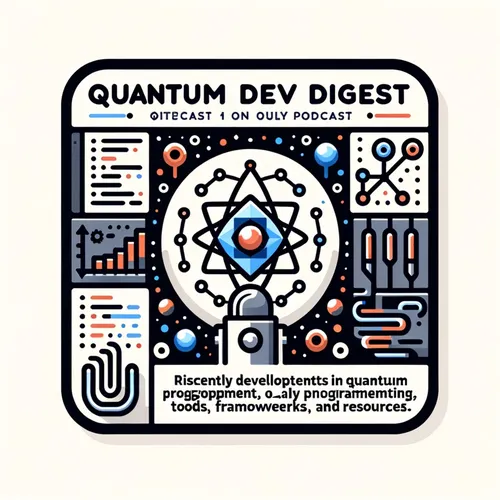D-Wave's Quantum Leap: Solving the Impossible in Minutes
- Author
- Quiet. Please
- Published
- Tue 08 Apr 2025
- Episode Link
- https://www.spreaker.com/episode/d-wave-s-quantum-leap-solving-the-impossible-in-minutes--65443526
This is your Quantum Dev Digest podcast.
Hello, quantum enthusiasts! Leo here—your Learning Enhanced Operator—and today on Quantum Dev Digest, we’re diving straight into a breakthrough that has the quantum community buzzing like never before. No drawn-out intro, no fluff—let’s get quantum.
Yesterday, D-Wave Quantum announced a jaw-dropping milestone: their system achieved quantum supremacy by solving a materials simulation problem that would have taken the world’s most powerful classical supercomputer *one million years* to crack. To make it even more astonishing, their quantum computer completed this task in mere minutes, consuming just a fraction of the world's annual electricity demand. This isn’t just quantum theory—it’s quantum reality, and it’s advancing at light speed.
Let’s unpack what happened here. D-Wave used a method called quantum annealing to simulate magnetic material properties, a task central to materials discovery and design. In a world of dwindling resources, these simulations could unlock breakthroughs in energy-efficient materials, advanced semiconductors, and even climate technologies. Dr. Alan Baratz, D-Wave’s CEO, described this as the first unequivocal demonstration of quantum computational supremacy on a real-world problem. That’s right—this isn’t just abstract math; this is practical, transformative problem-solving at its core.
Now, how do we make sense of this in everyday terms? Imagine you’re standing by a murky pond, and hidden somewhere underwater is a treasure chest. A classical computer would solve this problem by poking every inch of the pond with a stick—methodically, painstakingly, and slowly. But a quantum computer? It’s like tossing a stone into the pond and watching the ripples. These ripples interact with the hidden chest, revealing its location almost instantly. That’s the power of quantum computing: it doesn’t just solve problems—it reframes how we approach them entirely.
But why does this matter to *you*, dear listener, in your everyday life? Let’s connect it to something we’re all grappling with right now: climate change. Last week, world leaders gathered at the Geneva Climate Summit to tackle the planet’s most pressing challenge: reducing carbon emissions while sustaining economic growth. Quantum computers, like the one D-Wave just demonstrated, could help us simulate and predict the outcomes of complex policy decisions with unprecedented accuracy. Imagine identifying the precise energy policies that lower emissions *and* drive innovation—quantum makes that possible.
D-Wave’s achievement also opens doors far beyond climate science. Picture industries like drug discovery, where quantum simulations could design life-saving medications faster than ever before. Or supply chain optimization, where quantum could anticipate disruptions and adjust logistics in real time—a game-changer amidst our ongoing global chip shortages.
So, how does D-Wave’s method differ from other quantum approaches? They use quantum annealing, which is particularly potent for optimization problems—finding the best solution out of countless possibilities, like minimizing energy configurations in materials science. This is in contrast to gate-based quantum systems, which are focused on broader computational tasks using qubits in superposition and entanglement. Speaking of entanglement, imagine two spinning coins synced so perfectly that flipping one automatically determines the state of the other, no matter how far apart they are. That’s quantum entanglement in a nutshell, and it’s one of the fundamental principles powering these revolutionary machines.
Now, let’s take a step back to consider the bigger picture. D-Wave’s breakthrough isn’t just about outperforming classical computers—it’s about solving those “impossible” problems that have kept us awake at night. Problems where even the best classical algorithms fail to...
